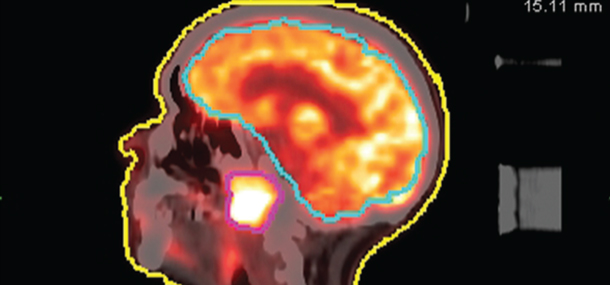
Image supplied by MIM Software Inc.
Over the past four months, there have been some new and exciting renovations in Nuclear Medicine at Cincinnati Children’s. Two of our rooms have been redesigned in preparation for two new GE gamma cameras as well as new software to process the images from the new equipment.
 Image: Nuc Med camera with SPECT/CT capabilities.
Image: Nuc Med camera with SPECT/CT capabilities.
The first camera installed is a single-head camera, which gives us more flexibility in our department because we can perform different types of imaging on it than on previous cameras. The single-head camera is used frequently for kidney imaging. The head (which is similar to the “lens” of a camera) is placed under your child’s bed for imaging, while the top is open for him or her to play, watch movies and have you very close by. It also has the ability to move quickly with just the press of a button, which is very helpful when we need to focus on the child that is being imaged.
The second camera installed has SPECT/CT capabilities. This type of hybrid imaging gives us both functional and anatomical information. We take a 3D image (SPECT) and fuse it with a low-dose CT image. The new technology available with this camera gives us the ability to have enhanced imaging with shorter imaging time and/or reduced radiation dose. The new CT component available allows us to modulate the radiation dose specific to the child so that we are able to give the lowest CT dose possible while still acquiring high-quality images.
Another great resource our radiologists are using in Nuclear Medicine is a new software called MIM. The radiologists are able to view Nuclear Medicine, MRI and CT with the same software. The MIM allows them to fuse together these different types of images to get a better view and understanding of what is going on within your child.
 Image supplied by MIM Software Inc.
Image supplied by MIM Software Inc.
All of these new technologies and cameras in the Nuclear Medicine department allow us to provide better, faster images while striving to lower the radiation dose for every patient. While this is just one component of the high-quality care we provide, it opens so many possibilities for looking at your child in a whole new way.